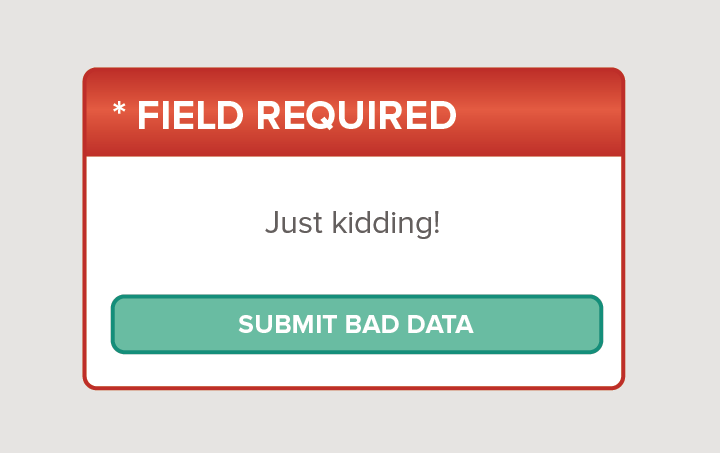Your submission is accepted: FEC’s digital gatekeeper bars few

The Federal Election Commission (FEC) has recently enlisted the help of an outside agency, the General Services Administration and its elite squad of civic techies called 18F, to overhaul its website and push the boundaries of open disclosure to new heights. And while the notion of a government agency tweaking its internal workings may not seem like a big deal, the computer system at the FEC holds a unique role in the electoral process: It determines whether accurate information is available to the public immediately, or with a sometimes sizable delay.
The capabilities of government computer systems can determine the effectiveness of the agencies to which they are attached. Think of HealthCare.gov or the scheduling system for doctor appointments at the Veterans Administration. The FEC’s system is no different, but in some areas the commission’s interest in enforcing the law and the public’s interest in understanding who funds our elections aren’t always in sync. An investigation by the Center for Responsive Politics and the Sunlight Foundation into one of these areas, the e-filing system, reveals one of the roots of the divergence.
By the FEC’s own account, it has been able to make the information on disclosure forms available to the public within 48 hours no less than 100 percent of the time in each of the last five years. By comparison, in every one of those five years the agency has missed its own goal of making the audited versions of the same reports available within 30 days, it has achieved the goal for 85 percent of reports. There’s a reason the feds can make their 48-hour goal every time: They don’t have to do a thing. The filings are simply made public as they were filled out, which is by way of a simple verification system like we’ve all encountered in online web forms.

Unlike most web forms, however, the system accepts submissions with an assorted collection of blank fields and missing dates — many of them labeled “Required.” Those completing the forms can neglect to answer such critical questions as what type of entity — individual, candidate, party, PAC, etc. — the filer is, or whether or not money was spent in support of or against a candidate. The FEC terms these blank fields “warnings.” There is no limit to the number of warnings that may be submitted in a filing.
In the last six months, campaigns, PACs, individuals, parties and other organizations have, on average, submitted almost 5,000 blank required fields per month to the FEC, according to the FEC’s submission validation tool, which is distributed to vendors of filing software. And the most common errors are some of the most important to the voting public: 82% of required fields left blank have to do with identifying either the donor or recipient of a contribution.
Among fields that aren’t required, the numbers are even higher. The FEC’s system can detect a problem with nearly 200,000 data fields but allows the filings to go through regardless of how, or whether, they’re filled out. That means the agency’s employees need to scrutinize and try to fix those fields and re-release the filings to the public in audited form over the next 30 days. That’s a tall task.
Most web forms would routinely reject submissions that were missing basic information like zip code, address, state or the time period covered by the filing. Some fields that are left blank go directly to the FEC’s regulatory mission: “Was the loan from personal funds?” and “Treasurer Last Name” are both required, but leaving them blank doesn’t stop the submission.
Some fields are especially likely to turn up without information. Take loans, for instance. Two schedules, one for loans to a committee and one for loans from a committee to other political groups, are attachments to consecutive questions on the same form, and the same fields are required on each of the schedules. But there is fully a 50 percent chance that the date the loan is due will be blank when the committee is owed money by another group, the highest rate for a single field. In fact, it’s five times as likely that a document on money owed to a committee will contain at least one blank-but-required field compared with a document on funds owed by a committee. This is potentially significant because money that campaign committes loan to each other can in effect be a donation. Donations are supposed to be capped. But if the loan is never repaid, contribution limits could be violated; the FEC — and, by extension, the public — would be none the wiser.
Computer systems, especially those in government, are powerful tools. They make possible the quality of disclosure we’re accustomed to at the FEC and other agencies. The numbers of forms that pass through this system are staggering: a quarter million in the last six months, some having been amended and submitted again and again (10,000 forms were amended at least once; one was amended and resubmitted nine times). The FEC, for its part, is taking steps to make sure the system is used properly. Public meetings, public comment and the enlistment of 18F are all good signs that the decisions won’t be stuck in a back room.
However, as scandals such as the recent missing emails at the IRS attest, the systems are, intentionally or not, difficult to scrutinize. With what’s at stake at the FEC, an election in the next 30 days and the presidential on the horizon, a closer look couldn’t be more timely.

